How to repair the blind area?
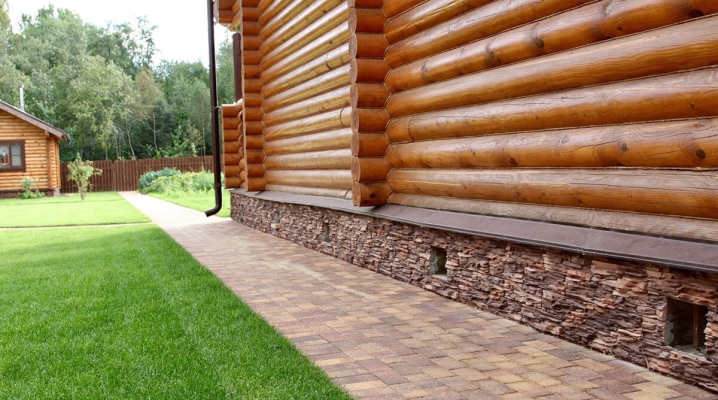
A building without a blind area around it is difficult to imagine. At least what claims to be architectural and engineering integrity. But the blind area can begin to collapse quickly, a couple of seasons after pouring. Cracks appear in it, through which water enters the house, and plant seeds very quickly make their way into these cracks, grass and even trees begin to grow. Therefore, it is better not to delay the repair of the blind area.
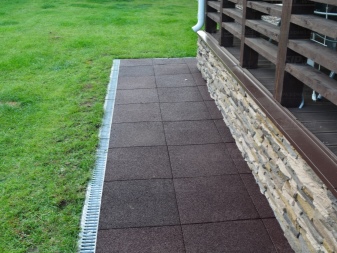
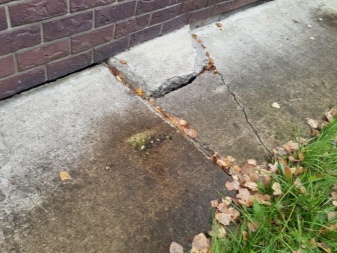
How to repair cracks?
Most of the repair work can be done by hand and without dismantling the old blind area. There is a technological plan according to which most of the cracks are repaired. In this step-by-step instructions, several building products appear at once, "patching" the blind area.
Here is the pattern for patching up the cracks.
-
First you need to remove everything that falls off. You do not need to break everything at all, you should only remove what can be removed with your hands or swept away with a broom. Something will surely turn out to be pry off with a chip. If the slots are narrow, they can be widened with a spatula.
-
Then comes the priming stage, this should be a deep penetration composition. You need to prime with a brush. The purpose of this step is to slightly harden the cracked surface. It is important not to overdo it with a primer, but you do not need to regret it.
-
Next, you need to make a leveling screed with a repair mixture or plastic mortar. First of all, those places where the surface is cracked are smeared. It's great if you can add PVA glue to the building mixture for greater strength.
-
Then a waterproofing layer should be laid: roofing material or polyethylene is used. A basement overlap of 8 cm is also made.
-
The top layer of the waterproofing layer is a reinforcing mesh made of wire, its cell is 5 cm.
-
Next, you need to pour a concrete layer of 8 cm, the slope from the structure is 3 cm. After pouring, the concrete must be tough, therefore, when laying it, it is ironed and smoothed as much as possible. The next day, sand with a float (you can use a wooden one, you can use a polyurethane one).
-
If the building is not very large, for example, it is possible to do without transverse seams. They will be required on areas that cover more than 15 m. If a seam is still needed, it is made with an interval of 7 m from the board after creosote processing. The seams are made of solid foam, a centimeter strip is placed over the entire depth of the layer. After the concrete is taken up, the excess can be removed.
-
The outer edge of the blind area will be even if you use boards for formwork. Then they are removed, and soil is sprinkled on the same level with the blind area. If the concrete layer is less than 5 cm, a "tooth" is made at the edge (thickening is made up to 10 cm). You can also make a concrete curb at the edge, or install ceramic bricks - then you will do without a board.
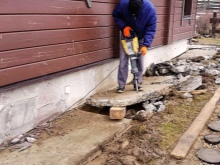
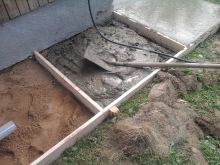
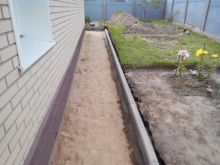
This is the general technological plan. And then - a description of actions in different situations that are associated with the features of the formwork.
Subtle irregularities
Small crevices, chips and tears in concrete can grow into something more, which already requires other forces to correct. Therefore, until the cracks begin to grow, they need to be removed.
Let's see how to do this.
-
If the crack is not more than 1 mm. Such cracks, of course, will not destroy the blind area, they may even disappear by themselves. You can do with the surface sealing of cracks with a primer (if the blind area is not used as a path).
-
If the depth of damage is up to 3 mm. It is necessary to fill the cracks, a solution of cement and water is used.
-
If the crevices are up to 3 cm, they must first be embroidered to form a cone, then there is a primer and concrete pouring. And to form a seal, you need a putty.
-
If the blind area exfoliates and crumbles, problem areas of the entire structure are removed, the edges are treated with a primer and filled with a water-cement mortar with the addition of liquid glass (all in equal proportions). The area, which has been restored, is covered with foil and awaits complete drying.
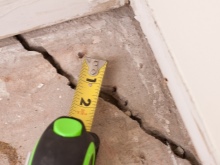
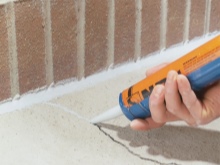

If the splits are more than 3 cm, concrete pouring and restoration work are also needed.
Large layers
To correct severe deformations, a concrete mixer is required. In it, prepare a mixture for pouring. Take 1 part of cement, 2.5 parts of sand, 4.5 parts of crushed stone, 125 liters of water per cubic meter of ready-made solution, plasticizers and additives, if necessary. It is better to prepare the mixture in a concrete mixer, try to apply it within 2 hours. The poured concrete will be wet, it should be covered with burlap so that the water does not have time to evaporate very quickly. This, by the way, also prevents the subsequent cracking of the surface.
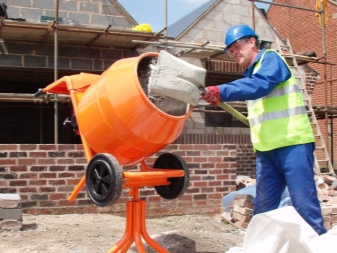

Cobblestone
If the top layer is made of cobblestone, the repair will not be easy - the cobblestones themselves will have to be removed, as well as the bonding layer. If the substrate has not sagged, you can simply fill the vacated fragment with rubble, and then tamp it. Finally, the area is restored with cement, on top of which stones are placed. And the filling of the volumes between the cobblestones with cement mortar will complete. It will not work just to cover up something, the cobblestone area requires such radical measures.
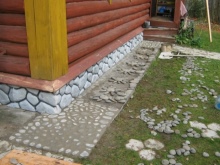
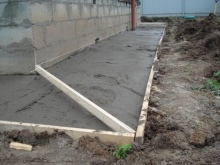
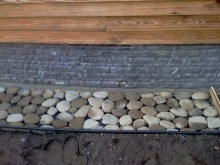
On the surface of the tiles
A tiled blind area requires repair if one or more tiles are damaged. If the blind area is used incorrectly, this can happen quite quickly, if there was a strong mechanical action on the structure, the repair will also not be long in coming. The damaged tile will have to be removed, the vacated area should be covered with sand, laying new whole elements.
Sometimes paving slabs in the blind area have to be repaired if they sagged or sank. Not necessarily the whole, possibly one section. Such a defect is formed as a result of an illiterate installation of the pillow.
To repair the blind area, you need to remove the tiles from the damaged area, make a sand-crushed stone pillow, and then put a new tile.
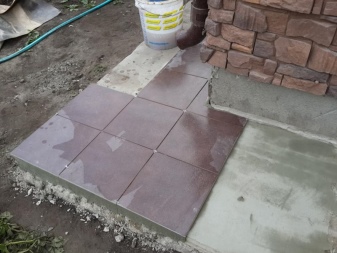
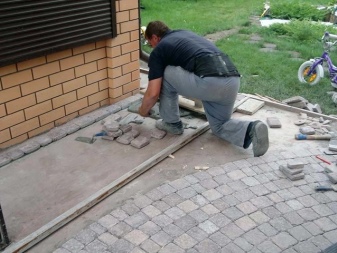
What if I moved away from the foundation?
This happens quite often: after the first year of use, the blind area is disconnected from the base. This is due to the shrinkage of the structure, but possibly also in the course of violations in the construction. If the blind area has moved away from the base of the house, if it has subsided, it can be repaired.
If the design has moved away significantly, you must first of all find out why this happened. It happens that the reason for crevices is not in the mobility of the soil at all. If the workflow is disrupted, sometimes you have to break everything and rebuild the blind area. If the soil is obviously very heaving, then the blind area needs reinforcement. With the help of rods, the structure will be connected to the foundation, which will save it from further "excommunication". Or at least it will not allow the already existing gap to widen.
A crack that appears in the place of the basement can be removed very simply: it is sealed with soft materials that preserve thermal conditions and freedom for the two structures. The clutch material is masked by finishing borders, all kinds of decorative inserts and slopes.

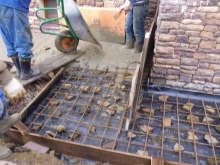
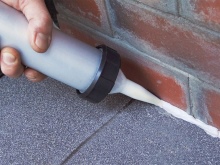
How do you fix other defects?
Alas, this is not all force majeure that can happen to a blind area in a private house.
It is necessary to disassemble the repair and restoration of the blind area - the most common cases.
-
If the soft blind area is damaged in the upper waterproof part. Repair is carried out by adding backfill or adding sand, which will fill the intervals between the gravel. This can be important if the sand is washed out by precipitation or melt water.
-
Replacement of waterproofing is required. This case can be classified as complex, because the waterproofing layer does not even lie 15 cm from the upper level of the blind area. All grit must be removed to expose the insulation layer. A patch should be made on the hole in the material and the sealant (or glue) should be restored to the impermeability of the layer.
-
Different materials are used to eliminate large damage - a mixture of construction glue and concrete, special polymers, polyurethane foam (special moisture resistant). When these compounds penetrate the cracks, the mixtures harden quickly. Cement will not work because it will only cover the top layer of the expansion hole, not the entire depth.
-
If the blind area does not adjoin the plinth, expect cracks. The problem needs to be addressed. We'll have to make a drainage base, lay the blind area close to the structure, and to seal the seams, use polyurethane-based sealants.
-
Concrete failures must be dismantled. Then it will be necessary to lay new plots anyway. If there is not one failure in the blind area, but several, it is easier to make a new one - and it will come out faster in time, and a more reliable option in terms of the quality of repair. It is more convenient to seal expansion joints with bituminous mastic.

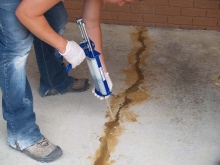
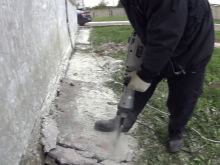
It happens that the scale of deformation is too large to be dispensed with without dismantling.
The only option for renovation is to lay new structures on top of the old ones. Well, if this does not work out, the entire blind area is dismantled, and fit again from the very beginning, in a strict technological sequence. For every one and a half meters - expansion joints.
To avoid the same mistakes a second time, you need to study them: in this way it will be possible to exclude all factors leading to cracks in the blind area. For example, they forgot to put waterproofing - in fact, a fairly common case. Or it was badly tamped, it was covered unevenly, with such a thickness of the top layer, the blind area will not be able to serve for a long time, and the area adjacent to the house will sag or collapse.
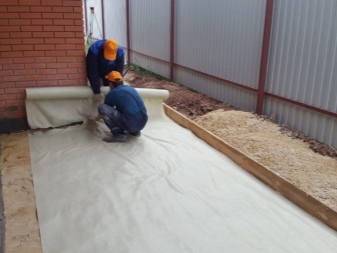
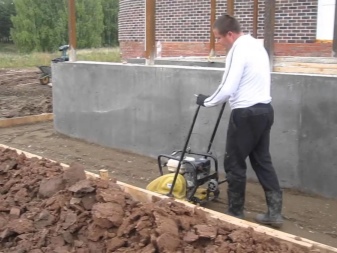
Finally, if expansion joints are not made, soil that expands, shrinks, swells (and all more than once) will negatively affect the integrity of the concrete base. Expansion joints help offset the potential harm from these natural phenomena. It turns out that the best repair option is the initially correct laying of the blind area, and if this did not work out already, then the repair is necessary in compliance with all technological requirements.
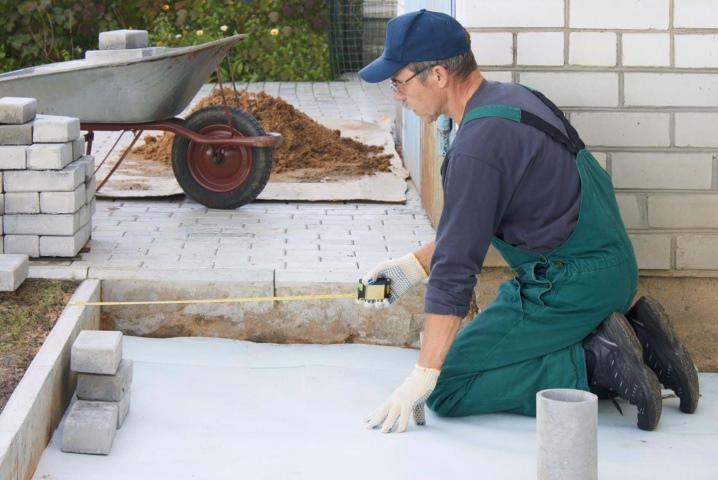
Tips for repairing the blind area in the video below.













The comment was sent successfully.